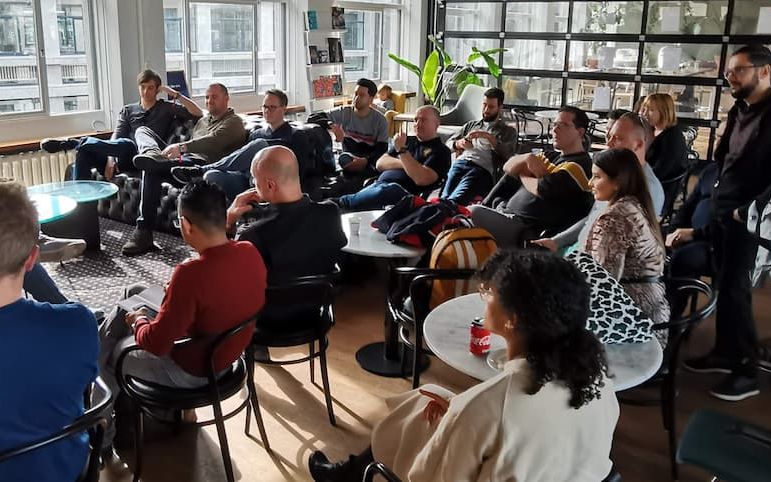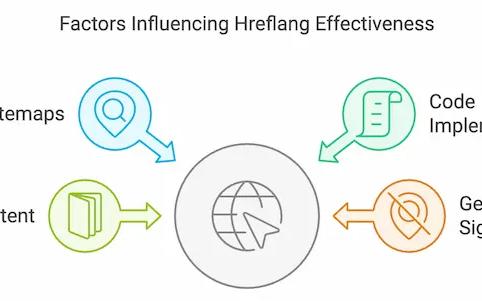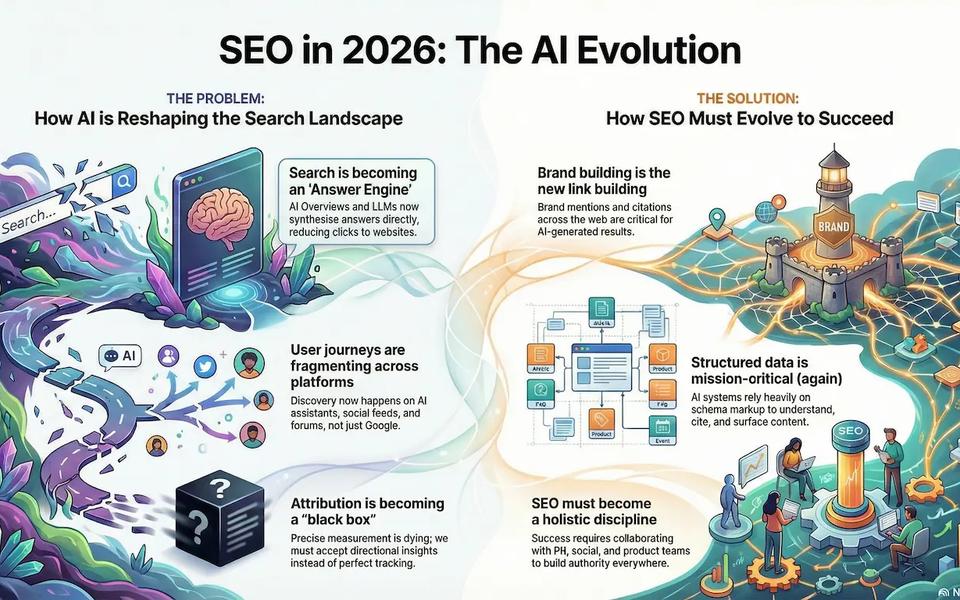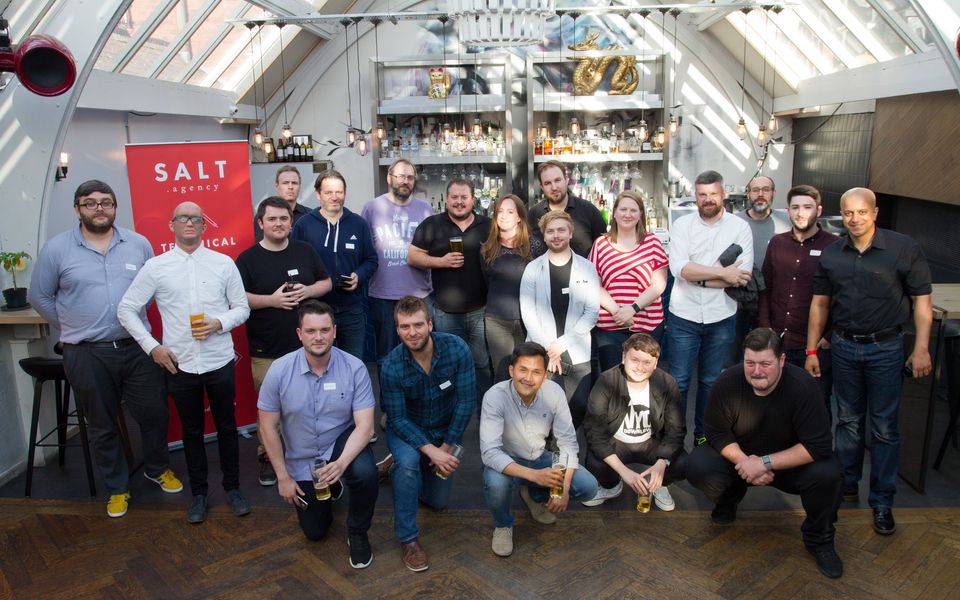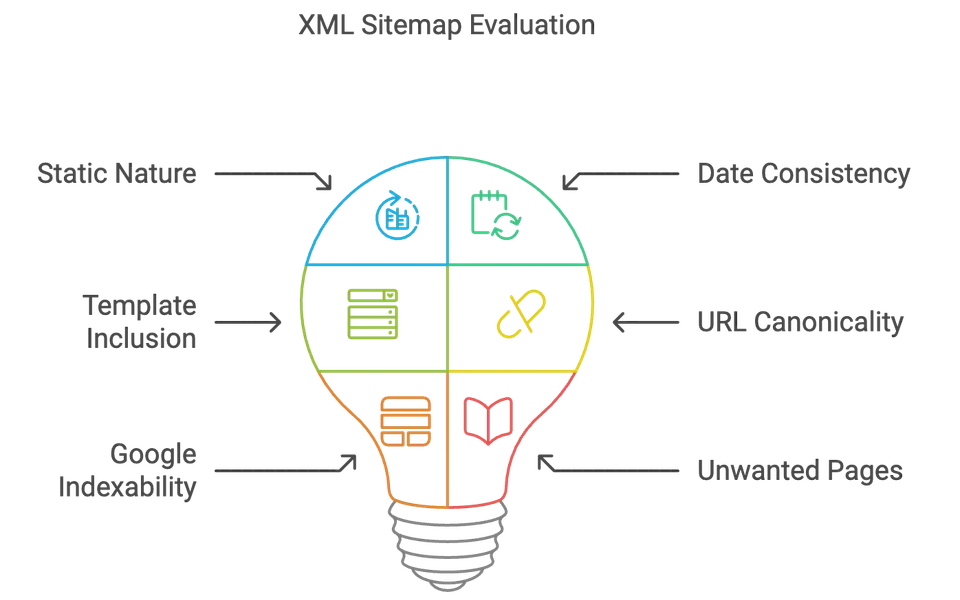Information Architecture (IA) is the specialism of crafting a website structure that allows users and search engines to understand and discover information, as well as understand their relative location on the website.
An information architect looks at various aspects of the website and has a role to play in the formation of sitemaps (XML and HTML), URL and subfolder hierarchies, categories, the various website menu navigations, metadata and the internal linking structure.
Various stakeholders influence a website’s information architecture over the course of a web build, but it’s important that users remain at the heart of the IA.
No matter what the purpose of the website, Google’s recent update to the search quality guidelines, as well as core algorithm updates aimed targeting websites that don’t offer a good user experience.
The key questions to ask when developing a user-friendly architecture, we have to factor in more than just the user. How we lay out the website structurally, how we build structural internal links can also affect the internal link flow, as well as how search engines crawl and identify pages.

We need to ask ourselves how information is presented back to the user, how the information helps a user and, if the content contains links to other sections of the website, how they benefit the user.
Establishing Information Architecture
The practice of information architecture as we know it can trace its routes back to the days before personal computers, the Maganavox Odyssey and the first mobile phone. Drawing on theories found in library science and modern architecture.
Library Sciences
Library science has a number of definitions, but the most commonly accepted is that library science is a study of how to categorise, catalogue and locate resources. Bibliothecography led to the creation of classification systems such as the Dewey Decimal System, Universal Decimal Classification and the Colon Classification.
Some of the first references to library sciences can be traced back to 1627, in a text written by French scholar Gabriel Naudé.
In the modern digital world, library sciences has been used to define many modern database and server systems using principals of cataloguing, archival and retrieval. Cataloguing and archival methodologies are important to information architects. Cataloguing is the process of establishing a system of identifying content for future retrieval and archiving refers to the process of creating a database that can store content, that in the future may need to be edited or removed without destabilising the integrity of the database itself.

Both cataloguing and archiving are key factors in curating a positive user experience, by creating strong information architecture; users can identify and retrieve content that highly satisfies their needs.
This means keeping your archive secure and maintained. In the traditional sense, this meant employing a librarian to maintain the archive and keep order. In the modern, digital sense, this means keeping the database secure and free from outside intrusions (such as malicious SQL injections), or from allowing people who aren’t attuned to the necessity of maintaining order and structure from creating pages randomly on a website.
Modern Architecture Learnings
Modern information architecture was devised by Richard Saul Wurman, a graphic designer and architect by trade, and as you might know him, the founder of the TED conference.
Much like the architecture of a building, information architecture can take on many different forms, as demonstrated by the internal link structure visualisations earlier in this article. There is no one single right way or wrong way to design or build an organisation system, as long as functions.
Wurman hypothesised that information architecture should be structured in the same way that a building is devised, with a solid foundation that be built upon.
How To Deliver A Working Information Architecture
Information architecture requires the input of SEO, UX, visual designers, developers and users themselves (beta testers). Together, these skills can complete tasks ranging from keyword research and mapping, to creating navigational elements and data modelling.
User Research And Demographic Analysis
The research and development phase of information architecture is all about the user, and the users needs. I’ve inherited websites and campaigns in the past where this stage has been skipped.
Demographic analysis for me is the most important part of this process, if your core user base is older or of retirement age it’s important to take into consideration the flow of a website and that they may not be as computer savvy as millennial users.
User research can also take the form of surveying current website users through non-intrusive pop-ups on site. You can also utilise other marketing channels, such as email marketing lists and reach out for honest website feedback.
Website Navigation And Page Hierarchy
As far as I can remember, SEO best practice has dictated that key pages should sit one subfolder off of the root domain and be prominent within the website’s top navigation.
This can often conflict with UX, who want to create descriptive URLs and subfolders that map “the perfect user journey”. Before you know if, simple about us pages become nested subfolders under “the brand experience”.
The information architect is responsible for bridging this gap and connecting the two ideals, helping both parties (and other stakeholders) achieve their goals.
While standard and important pages might be easy to place, others such as FAQs and reviews could post some debate. The business may want to add these too the help section, but research may suggest that users expect to see them on individual products and services.
In this situation, the IA might recommend and suggest that on the products the FAQs exist as internal links on the product pages, and link through to the relevant FAQs on the help pages. An alternative may also be to include the relevant help and FAQ on the product and service pages themselves.
These decisions often occur when a hierarchical diagram of the website is being created, often referred to as a sitemap. Wireframes can also help demonstrate the connections between pages, and elements on the page in a visual way.
Categorisation, Metadata And Schema Mark-up
The classification of content by attribute is both important from an SEO perspective, as well as from a users point of view. On an ecommerce website categorising products by type, material, dimensions and other attributes is important. Schema data can also be deployed to improve a search engines understanding of the product.
Likewise it’s important that product details are prominent within the product naming and description. If a product has a blue matte finish, make sure you include this in the product description and potentially in the product naming.
Conflicts will arise with those interesting in protecting brand integrity and tone of voice, so compromises will need to be made.
Schema mark-up is always worth investigating. Through research I’ve managed to find schema for almost every industry and a wide variety of on-page elements. It is also factored into the design and doesn’t affect the website visually, so it’s often an easy win if you can get it integrated into the website build or a development sprint.
Content Modelling
Google (and the other search engines) are designed to serve users with content that meets and satisfies their search intent.
Over the past year I’ve seen a number of websites lose ranking positions for big marquee terms because either their content or business model is no longer deemed as relevant for that term.
Websites that are thin on content, or have a subscription model, by default offer less user value vis-à-vis a website that offers the same content, but more of it and for free. To become relevant for those terms again, significant content changes or changes to the business model need to be made, so it’s not always possible to regain that lost ground.
The intent and relevancy for a search phrase can also change.
Last October the Dyn DDoS attack brought global awareness to what a DDoS attack and what a DNS actually where, even the White House released a statement about the cyber attack. As a result search interest around the terms boomed to an all time high, and the highly technical content that ranked before became too technical for the search audience, so Google changed the search results and the type of content that was ranking in order to highly meet a users needs.
The IA can work with the SEO and content teams to advise on what content (and what type of content) needs to be produced in order to be relevant for the search terms and for users.

























